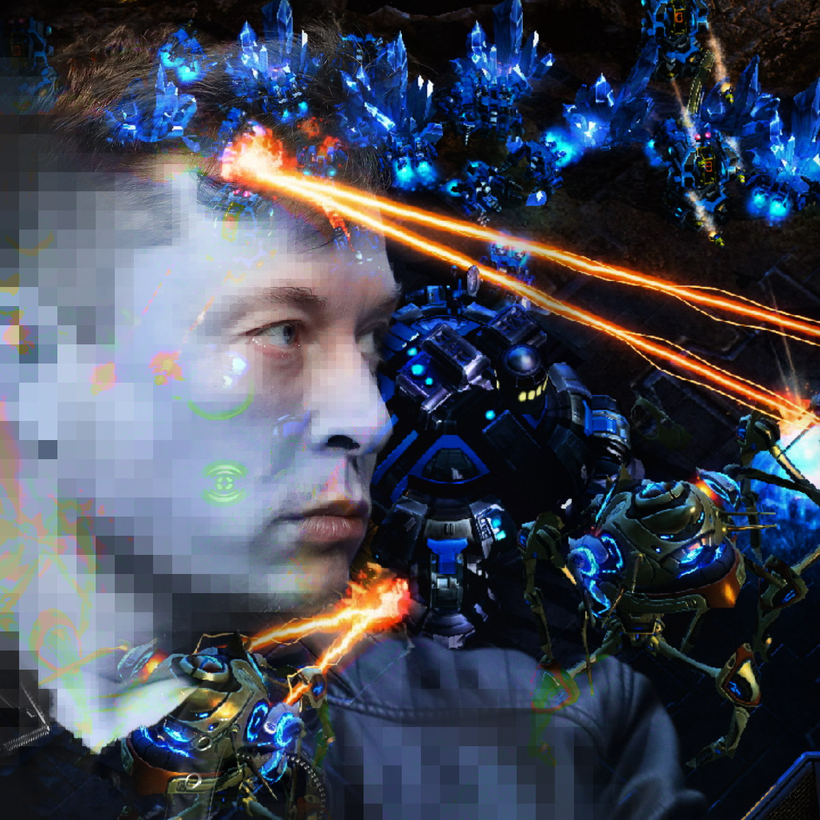Of the memories that one early PayPal employee recalled from his time at the start-up, in the late 1990s and early 2000s, among the most vivid was the nod from the boss.
The boss was Elon Musk, then C.E.O. and co-founder of the company. The nod was a signal for the employee to pause what he was doing and compete against Musk on the office’s arcade version of the video game Street Fighter. “He would come over and give me the little, you know, head nod toward the break room,” the employee recalled, chuckling.
Musk wasn’t just the leader of the company—he was reportedly the firm’s top Street Fighter contestant. The employee on the receiving end of “the nod” admitted that his own skills at the game didn’t surpass Musk’s, but that he could give his C.E.O. a run for his money from time to time. “Most of our games came down to the third fight,” the employee remembered, “as he would win one, and I’d win one. And that third tie-breaker fight usually came down to a few pixels on the health meter!”
As the world comes to learn more about its now wealthiest entrepreneur, a great deal has been written about Musk’s contemporary goings-on—his leadership of Tesla, SpaceX, and the Boring Company, among other subjects. But in researching The Founders: The Story of PayPal and the Entrepreneurs Who Shaped Silicon Valley, my new book on the origin story of PayPal, I found that many people who knew Musk early on in his career remarked on something that the press doesn’t often talk about: his kid-in-a-candy-store passion for all things video games.

Young Musk was no casual weekend gamer. His earliest commercial success came in 1984, when, at the age of 12, he wrote and sold the code for a game called Blastar for $500 to the magazine PC and Office Technology. “In this game you have to destroy an alien space freighter,” the listing noted, “which is carrying deadly Hydrogen Bombs and Status Beam Machines. This game makes good use of sprites and animation, and in this sense makes the listing worth reading.”
“E.R. Musk” published the game’s dozens of lines of code for the Commodore Vic 20 platform, a Spectravideo home computer whose eight-bit model had debuted the year prior. Musk and his younger brother, Kimbal, planned to open a video-game arcade close to their school, but their need for a city permit ultimately reportedly put a pin in the plan.
“He would just come over and give me a little head nod,” the employee recalled. “And that was the sign for me to go over to Street Fighter.”
During college, at the University of Pennsylvania, Musk took these and other talents and joined the buzzy Palo Alto–based video-game start-up Rocket Science Games as an intern. Founded in 1993, Rocket Science Games featured a roster of remarkable graphic designers and talented engineers. The job was unglamorous—“He was the ‘disc flipper’ that came in at night while the game software was rendering,” his supervisor, Mark Greenough, told me—but the work gave Musk a taste of Silicon Valley as well as burnished his video-game bona fides. (Two Rocket Science titles—Loadstar: The Legend of Tully Bodine and Cadillacs and Dinosaurs: The Second Cataclysm—feature Musk’s name in the game credits, alongside those of his Rocket Science colleagues in the “Ground Control” division of the company.)
As Musk launched his own ventures in Silicon Valley, his interest in video games endeared him to his engineering colleagues. One engineer, Ed Ho, who worked at an early Musk venture, the software start-up Zip2, recalled that he and others felt a kinship with Musk in part because of their boss’s ability to stay up all night playing video games. Among their favorite games was StarCraft, a military-science-fiction, real-time strategy game. “He’s Mr. StarCraft,” said Ho of Musk.
A great deal about Musk—his competitiveness, his technical savvy, and the respect he commands from his engineers—is reflected in his years as a video-game engineer and enthusiast. These days, his gamer background has even entered his professional foreground on occasion. Among other Easter eggs that have delighted Tesla owners over the years: the inclusion of video games in the digital console that serves as the car’s nerve center—a gaming nod from the boss that now reaches millions.

Jimmy Soni is an author and the former managing editor of the Huffington Post. His books include A Mind at Play: How Claude Shannon Invented the Information Age, co-written with Rob Goodman, and The Founders: The Story of PayPal and the Entrepreneurs Who Shaped Silicon Valley, out on February 22 from Simon & Schuster

